


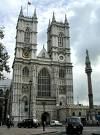
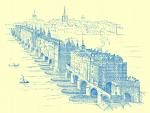



















TLW's Londonscope™ (London Historyscope) |
By T.L. Winslow (TLW), the Historyscoper™ |
© Copyright by T.L. Winslow. All Rights Reserved. |
Original Pub. Date: June 17, 2017. Last Update: Feb. 2, 2022. |

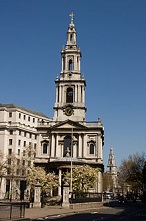
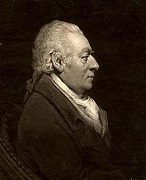
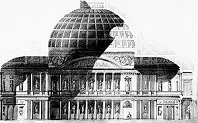
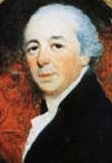

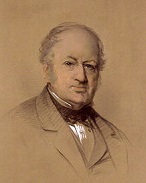

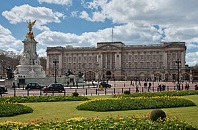
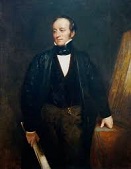
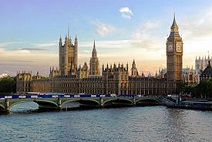




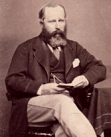
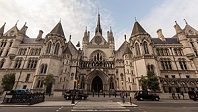
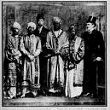
Westerners are not only known as history ignoramuses, but double dumbass history ignoramuses when it comes to London and London history. Since I'm the one-and-only Historyscoper (tm), let me quickly bring you up to speed before you dive into my Master Historyscope.
In 43 C.E. the town of Staines ("stones") upon Thames (modern-day op. 18.4K) is founded by Roman emperor Claudius at a crossing of the Thames River W of Londinium; in 1280 C.E. the London Stone names it as the W limit of the city of London's jurisdiction over the Thames River.
In 47 C.E. the Devil's Highway connecting Londonium with Pontes (Stanes) and Calleva Altrebatum (Silchester) is begun, becoming the main route to the W of Britain during the Roman occupation.
In 50 C.E. Roman soldiers found the city of Londinium (London) (Celtic llyn-din, "stronghold on the lake") (The City) (originally 677 acres) (modern-day pop. 8.8M/14M) on the N bank of the Thames River 30 mi. from the estuary on the North Sea) on the site of a Celtic wooden bridge (where they built a Roman fort in 43?), beginning England's "liquid history"; four systems of Roman roads begin construction centering on London, with a 5th built later not centered there; the Roman road later called Stane (Stone) Street runs 50 mi. from London SW to Noviomagus (Gael. "new plain") Reginorum (Regnentium), former home of the Regini subtribe of the Atrebates, which the Saxons later call Chichester; the city of Bath in SW England emerges as a great place to, er, take a bath, use your Bath chair, and as a center of Roman fashion, show off your bod; a legend that mythical king Bath Dude, er, Bladud (father of King Lear) built Bath and dedicated the medicinal springs to the Roman goddess Minerva causes the Temple of Aquae Sulis to be conflated with her, and a large gilded bronze head of the babe survives to modern times; Romans occupy Cornwall until 250 C.E.?
In 60 C.E. Iceni King Prasutagus dies, and although he leaves his kingdom jointly to his two daughters and the Roman emperor in his will, the Romans don't recognize squats, er, women as heirs and seize his territory as if already theirs, scourge Iceni regent-queen Boudicca (30-62) (Gaelic word for "victory"), a 6-ft.-tall red-haired Celt babe with bodacious tatas (or should have been) (who could kick everybody's butt and was the original Ice Queen way before C.S. Lewis stole it for his Narnia series) and rape her daughters, and try to enslave her people, calling in the ex-king's large outstanding loans (he had lived like a, er, king), confiscating lands and enslaving nobles, causing her to go nonlinear and vow to kick every Roman butt out of the island, gathering a large army of eager Celts, incl. the Iceni and Trinovantes of the Londinium area, drawing inspiration from the example of Arminius of the Cherusci, picking the direction of attack by releasing a hare and invoking British goddess of victory Andraste; meanwhile the Romans appoint Catus Decianus as procurator of Roman Britain, and his "rapacity" (Tacitus) fans the flames; meanwhile in an attempt to break the power of the Celtic Druids, the Romans under Gen. Gaius Suetonius Paulinus invade the Isle of Angelesey (Mons) in Wales, destroying their shrine and sacred groves; after hearing of Boudicca's revolt, they withdraw before consolidating their conquest.

In ya face, nyanyanyanya? In 61 C.E. while Roman gov. of Britain Gaius Suetonius Paulinus is off campaigning on Druid stronghold Mona (Anglesey Island) in N Wales, red-haired bodacious Iceni ice queen Boudicca (Boudica) (Boadicea) (Boudicea) (Buddug) (30-62) destroys the Roman colony of Camulodunum (Colchester) (former Trinovanti capital) and its hated temple to emperor Claudius after sieging it for two days, and routs Quintus Petillius Cerialis and his Roman legion IX Hispana sent to relive it, with only Cerialis and a few cavalry escaping, during which time Suetonius returns along Watling St. and decides to evacuate Londinium, allowing the madass Celts to burn it to the ground, followed by Veralamium (St. Albans), killing a total of 70K-80K Romans in the three cities, taking no prisoners and enjoying impaling noblewomen on spikes with their breasts sewn to their mouths while they hold parties and sacrifice to Andraste; after inviting the old and the young to watch the coming massacre in a ring of wagons at the edge of the battle, Queen Boudicca's army of 100K-230K Celtic Britons shows what amateur hillbilly rednecks they are when they are instead massacred by a regrouped (in the West Midlands) prof. Roman army of 10K (the XIV Gemina and XX Valeria Victrix legions, but not Legio II Augusta of Poenius Postumus, who ignores his call) under gov. Gaius Suetonius Paulinus at the Battle of Watling St. (High Cross, Leicestershire?) (Manduessedum near modern-day Atherstone, Warwickshire?), where the Romans line up in front of a wood and force the Celts to send wave after wave into volleys of heavy javelins (pila), after which they form a wedge and rush them, causing the Celts to flee and get hung up on the wagons, allowing the Romans to slaughter them, killing 80K Celts vs. 400 Romans, and capturing the rest, after which Big Babe Bo freaks and takes poison; coward Postumus falls on his sword when he hears of the Roman V; Nero gets the good news after planning to withdraw all Roman forces from the island, and Londinium is quickly rebuilt by the Romans; the Romans rule Britain sans resistance until 410 C.E.
In 367 C.E. the Great Conspiracy begins in Roman Britain after Emperor Magnentius' big D at the 351 Battle of Mursa Major, giving the native tribes their chance to rebel; too bad, they are quelled by next year.
In 368 C.E. the Pict, Scot, and Saxon tribes attack and plunder London (known as Augusta); the Picts and Scots are driven back from Britain, and the province of Valentia is formed.
In 409 C.E. the last Romans are expelled by the Britons, kissing Londinium (once 30K in pop.) and all the rest goodbye, and giving the starving Angles, Saxons, and Jutes of NW Europe a green light, with 200K eventually arriving just as the beleaguered Celts (Picts) begin raiding S while the new-kid-on-the-block Saxons mass for an attack up the Shit, er, Thames River; the line of Roman duces (defending generals) of Britain ends, and Coel Hen (350-420) (later known as Old King Cole) becomes the first Celtic high king of Brittonic-speaking N Britain and S Scotland, ruling from Eburacum (York); Hadrian's Wall is abandoned, and local builders begin scavenging its cut stones, leaving only a remnant by modern times; despite the true owners of the island, the Celts coming out of hiding to take the island back, they are crippled by generations of being barred from carrying weapons, causing them to be poor soldiers who lose every battle and get pushed back to their hiding places, while those who are captured become servants to the nouveau riche Anglo-Saxons, who set up an apartheid with six social levels for the underclass Britons, five of which are slave classes, causing the birthrate of the Britons to dwindle while that of the Anglo-Saxons zooms, so that eventually every other man on the island carries the "Friesian gene"; Anglo-Saxon kings begin to be crowned on a coronation stone at Kingston (Old English "king's manor") upon Thames (AKA Chingestone, Chingetune), 12 mi. upriver from London near an easy ford in Surrey.
In 601 Pope Gregory I sends a group of clergy from Rome to Kent to assist St. Augustine in converting the Anglo-Saxon pagans, incl. St. Paulinus of York (-644) (first bishop of York in 626-33) and St. Mellitus (-624) (first bishop of London in 604-16); on June 17 he writes Mellitus the Epistola ad Mellitum, instructing him to convert the Anglo-Saxons gradually, not destroying pagan temples but converting them to Christian churches while integrating pagan rituals and customs, "For there is no doubt that it is impossible to cut off every thing at once from their rude natures; because he who endeavours to ascend to the highest place rises by degrees or steps, and not by leaps."
In 604 C.E. St. Augustine consecrates Mellitus (-624) as bishop #1 of the Anglo-Saxon kingdom of the East Saxons after he converts king Saeberht (Saberht) (Saebert) of Esse (-616) to Christianity, and with help from his overlord King Aethelberht of Kent they build a church in London dedicated to St. Paul as Mellitus' new seat, becoming the start of St. Paul's Cathedral; St. Augustine (b. ?) dies in Canterbury on May 26.

In 1052 Edward the Confessor begins rebuilding Westminster (St. Peter's) Abbey (finished 1060), becoming the first English church built in the Romanesque style. On Dec. 28, 1065 the 513 ft. x 203 ft. Latin cross-shaped Romanesque Benedictine Westminster Abbey (Collegiate Church of St. Peter) in London (begun 1052) is consecrated, becoming the English royal church; Edward the Confessor is not present; the nave is 38 ft. wide and 102 ft. high; the twin towers on the W are 225 ft. high; in 1245 Henry III begins enlarging it.
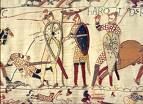




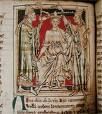


I wish I was a little bit taller, like six foot nine? On Jan. 5, 1066 Edward the Confessor (b. 1003) (son of Ethelred II and Emma) dies childless in London, and his remains are entombed behind the High Altar of Westminster Abbey, starting a tradition that carries through to George II as every English monarch except Edward V and Edward VII is crowned there; he leaves no Saxon heir to the English throne, but allegedly names his 6'4" blonde brother-in-law Harold Godwinson, earl of Wessex (grandson of prior king Hardicanute Godwin, son of Canute and Emma) as his successor on his deathbed, and on Jan. 5 the Witan elects Harold, who is crowned Harold II Godwinson(1022-66), the 20th monarch of England (last Anglo-Saxon) at Westminster Abbey on Jan. 6, after which on Mar. 20 Halley's Comet appears, which his fellow Anglo-Saxons take as a bad 666 omen (6-6-66); "And in this year also earl Harold was hallowed king; and he experienced little quiet therein, the while that he ruled the realm" (Anglo-Saxon Chronicle); his rival, Norman duke #6 William II (the Bastard) (1026-87) (1st cousin, once removed of Edward the Confessor via his mother Emma, whom he is the grandnephew of) claims the throne by right of succession, and also claims that both Edward and Harold had promised it to him, and gets Harold excommunicated by Pope Alexander II for his dirty business over the exiled Norman archbishop of Canterbury and for not deposing the Anglo-Saxon one, helping William's army by giving him a consecrated banner as a sign of papal approval in hopes of turning the English people gainst Harold, while assembling a fleet of 700 ships in Dives-sur-Mer on the coast of Normandy and assembling an army on the Isle of Wight, causing Harold to begin guarding the coasts of England against William during the summer; too bad, on Sept. 8 after provisions run low, a large part of Harold's force disbands in order to bring in the harvest, and he returns to London; meanwhile Harold's pissed-off brother Tostig Godwinson, earl of Northumbria sails to Norway and persuades Viking king (since 1046) Harald III Hardrada (Haardraade) (1016-66) (did his wife call him that or was he just bragging?) to help him seize the crown, and after waiting for a storm to pass on Sept. 12, they arrive together with a fleet of 270 ships, plunder the coast and burn Scarborough, then sail up the Humber River, attacking from the N at York and defeating the N earls on Sept. 20 at the Battle of Fulford Gate outside Jorvik (York); after receiving the bad news, Harold II issues the immortal gay-curious soundbyte: "I will give him just six feet of English soil, or, since they say he is a tall man, I will give him seven feet"; on Sept. 20 Harold leaves London, gathers the remainder of his c oastal militia along with his thegns and household troops (leaving the S coast unwatched, which gives Duke William his chance), and makes a brilliant dash N, covering 190 mi. in five days, surprising the invaders on Sept. 25 at the Battle of Stamford Bridge 8 mi. E of Jorvik in modern-day East Riding of Yorkshire, becoming the greatest battle so far between Norse and Anglo-Saxons; the over-confident Vikings decide not to wear their armor of leather jerkins with sewn-on metal rings because of the heat, and Harald is KIA with an arrow through his throat; Tostig and many other Vikings are also KIA, and only 30 Viking ships make it back to Norway; England has now been made safe for Anglo-Saxons forever, and they can keep speaking German and there will never be a Shakespeare, right?; too bad, Duke William, promising spoils, has been busy gathering an army of 6K-12K (7.5K?) from Normandy and all over Europe, incl. France, Italy, and Spain (incl. 1K mainly landless Norman knights, plus 500 more from Flanders and Brittany), and sails from St. Valemur in Normandy in his long ships (his ship is the Mora, bought for him by his wife Matilda), landing on Sept. 28 in Pevensey (pee in the sea?) on the SW tip of Sussex (65 mi. SSE from London), proceeding to terrorize the countryside, making use of the Chevauchee to burn and pillage in order to force Harold to fight while marching E to Hastings, causing tired Harold and his brothers Gyrth Godwinson (1032-66) and Leofwine Godwinson (1035-66) to hastily attempt to gather a larger force than William (the N earls are too late, and forces end up about equal, incl. 2K-3K Saxon housecarls, and hardly any cavalry like the Normans have, because the insulated Anglo-Saxons never learned to fight on horseback), then march 58 mi. in three days, waiting for William the Bastard a few mi. from Hastings on Caldbec Hill, which with Senlac Hill (Ridge) (originally Santlache, OE for sandy stream, then renamed by the Normans to Sanguelac, Fr. for bloody lake) guards the interior; on Oct. 14 (Oct. 21 Gregorian) (Sun.) after William learns of their position, the 8-hour unhasty Battle of Hastings (Senlac) (one of the longest medieval battles) features the Companions of William the Conqueror fighting an Anglo-Saxon shield wall with feigned Norman retreats to cut them down with cavalry as they try to climb back up the hill; both sides wear chain mail at least, but the Normans have archers and knights, and the Anglo-Saxons take 4K casualties to 2.5K for the Normans, contracting them around tall, blonde, good-arm John Elway, er, Harold, until William's cavalry drives home a charge at Harold, who stands his ground surrounded by his housecarls, but is KIA by an arrow through the eye (according to the Bayeux Tapestry) in the next Norman charge, then his brothers are KIA, and his depleted army flees after losing 25% of their men, later regrouping then suffering more deaths from dysentery; the battle is so close that if Harold could have held out for another hour, an approaching Saxon fleet could have blocked off William's rear and sandwiched him in a 2-front battle, preventing reinforcements or retreat, and the Normans would have been completely crushed?; the battle wipes out the Anglo-Saxon aristrocracy, with the few survivors turned into serfs, allowing the Norman aristocracy to easily take over, and another coup replaces the Anglo-Saxon higher clergy with Normans; the first major medieval battle using knights, spawning their myth of invincibility?; William the Conqueror (Dark Horse MVP of the English Super Bowl, known for his 4th-quarter comebacks?) then plunders SW England, and advances though the Dover Strait towns (Dover, et al.) to secure his communications with Normandy, then up the Thames River looking to cross over to head to London and being repulsed until Anglo-Saxon lord Wigod (Wigot) (kindsman of Edward the Confessor) invites him to cross from W to E at Wallingford in Berkshire N of London, then E to Berkhamsted (Berkhamstead) in order to cut off any aid which Edwin and Morcar might send; meanwhile on Oct. 15 the Witan elects Edgar (the) Aetheling (1051-1126), grandson of Edmund II Ironside (last surviving rep. of the West Saxon royal house of Cerdic) as the new king, never coronating him; too bad, after exchanging letters and failing to recruit enough patriotic Anglo-Saxons from the hinterland, the undefended city of London finally capitulates, sending a delegation outside the walls to kiss foot, and William's army peacock-struts into London, where the Witan offers him the crown, and Edgar resigns on Oct. 10 at Berkhamsted (we were just kidding, you da king, you da king?), being taken back to Normandy by William and treated well until he joins the 1068 rebellion; on Dec. 25 (Christmas Day) William the Bastard becomes William the Conqueror, and is crowned William I (1026-87) (21st English monarch) at Westminster Abbey by York archbishop (since 1060) Ealdred (Aldred) (-1069), assisted by excommunicated Canterbury archbishop Stigand (who has the wealthiest estates in England after Harold), tying England to Normandy for 150 years (until 1204); the first of 3x that England has three kings in the same year (1483, 1936); William begins feudalizing England, completing it by his death in 1087; he keeps the local shires and Hundred Courts, along with the Royal Writ and cool Anglo-Saxon coronation order, but makes sure that estates are spread out over two or more counties to stop attempts at provincial autonomy; each royal tenant-in-chief has to supply from 5-60 knights (in multiples of five) to the king when ordered, a total of 5K for the country; knowing that they can only be made to serve 40 days a year, and are too expensive to transport across the Channel, William institutes scutage ("shield money"), allowing the payment of money in lieu of service so he can hire foreign mercenaries in their place, which later helps the English monarchy raise bigger armies than the French et al.; the Witan is combined with the Norman Curia Ducis (duke's court) to form the Curia Regis (king's court); 3x a year all royal vassals must attend it to hear his announcements, advise him on policy, and hear lawsuits involving the tenants-in-chief; no castles can be built without royal permission; the Anglo-Saxon title of sheriff (shire reeve) is coopted for Norman viscounts, who turn the office from weak to powerful, presiding over the shire courts, where William restores the old Carolingian (and forgotten Anglo-Saxon practice) of swearing-in juries, and acting as local agents of the royal treasury, taking on even the greatest lords in the name of the king; the hereditary rank of baron/baroness (lowest rank, below earl/countess) is created; the title of earl (deriving from the Scandinavian word jarl for chieftain) being cooler to Anglo-Saxons than the Continental title of count, the palatine earldoms of Kent, Hereford, Shrewsbury, and Chester are created, along with the barons of the Cinque Ports (Dover, Hastings, Sandwich, Romney, Hythe, later Winchelsea and Rye) to guard the coast of the Strait of Dover; the fast crushing Norman takeover leads to a loss of prestige for the Anglo-Saxons, who become "dogs", and for the next four decades the haughty superior Normans hold all Anglo-Saxon culture in utter contempt, destroying art works and mss., and turning the Anglo-Saxon language into hut talk fit only for peasants, while for the next 1.5 cents. England becomes a cultural province of France as English society begins to split into a French-speaking upper class and hut-talk-speaking middle and lower classes; the Normans introduce many French words to the Anglo-Saxon dogs, incl. boeuf, mouton, veau, porc, and poularde, which are transformed into beef, mutton, veal, pork, and poultry, along with Latin words, making the dogs want to use them to make themselves seem higher in class, e.g., turning hearty welcome into cordial reception; the Norman takeover was a blessing in disguise since otherwise their disintegrating kingdom would have been taken over by the Norse, cutting off England from exciting French cultural progress, although, duh, the retro Norse wouldn't have destroyed Anglo-Saxon culture and would have eventually been thrown out?; William I becomes Europe's most powerful monarch, setting up a new kind of kingdom that relies on law and admin. machinery rather than ideology to unify it like the Euro monarchies do, beginning the trend toward secularism and absolutism that dominates the 12th and 13th cents.; Norman Romanesque Architecture is born; Fotheringay Castle in Northamptonshire is begun; William I's half-brother Robert of Montain becomes earl of Cornwall, and builds Launceston Castle; the office of queen's (royal) champion is granted to Robert Marmyon, along with the castle-manor of Tamworth and the manor of Scrivelsby, with the job of riding in full armor into Westminster Hall during a coronation to fight anybody challenging the king's title (until 1377); the Norman Pierpoint family settles in a manor in West Sussex (Wessex) taken from Earl Godwin, which becomes known as Hurstpierpoint ("the wood of Pierpoint"); (a new hope?) although William I is king, Harold's partisans still hold most of the wild wild west (Wessex), incl. Barnstaple Castle in Barnstaple, North Devon at the mouth of the Taw River at the entrance to the Bristol Channel, which is granted by William I to Geoffrey de Montbray (-1093), who loses his barony in 1095 after rebelling against William II - Anglo-Saxon Jedi freedom fighters plan revenge against the haughty Norman evil emperor and his stormtroopers, but too bad, their Luke Skywalker is a wuss?

The bigger they are the harder they fall? In early Sept. 1087 after he wars with Philip I of France over boundaries and tarries in Rouen, having become so fat the he can barely move, causing Philip I to joke that he is "lying in", and there will be a grand display of candles at his funeral, pissed-off William I the Conqueror (b. 1027) vows to light Philip some candles, and sieges and burns Mantes, 30 mi. W of Paris; too bad, as he is riding among the ruins his horse stumbles, and he is thrown against the iron pommel of his saddle and falls, suffering abdominal injuries, and dies on Sept. 9 at St. Gervais Convent near Rouen after having centralized the Norman govt. of England so well that it is not successfully invaded again until ?; the downside is the subjection of not only the Celts but the Anglo-Saxons, and the worse serfdom ever seen on the island; the upside is introduction of French language and culture along with feudalism, chivalry, heraldry, and vocabulary, and better org. of agriculture; on his deathbed William I the Morbidly Obese confesses his sins, makes his will, distributes treasure to the poor and the Church, and provides for the rebuilding of Mantes; all his sons except Henry desert his deathbed to fight for the succession, while his officers and servants abscond with all the spoils they can grab; he leaves his eldest son (known for being easy-going, a fatal flaw?) Robert III Curthose (1053-1134) the duchy of Normandy, his mean middle son William II Rufus (the Red) (1057-1100) (known for his ruddy complexion and/or red beard) (Normans like to claim that their complexions are never ruddy like the Anglo-Saxon dogs) the crown of England in exchange for good behavior to his anointer and minister Lanfranc, and his youngest son (a good clark?) Henry I Beauclerc (1068-1135) 5K lbs. of silver to buy land (so he won't be called Henry Lackland?); "Red King" William II Rufus (1057-1100) is crowned (22nd monarch of England) amid dissatisfaction by the Norman barons of England; after a rustic vassal carries his remains to the Abbaye aux Hommes in Caen, William I's well-lit funeral ceremony at Norman Romanesque-style St. Stephen's Church in Caen is halted when the bishops try to squeeze his rotting corpse into a narrow sarcophagus, and the stomach bursts, spewing royal stench over the mourners, who flee?; Malcolm II's son (by Ingibjorg) Donald, who had been brought up as a Norman since 1072 is released and knighted, and elects to remain in England; shortly after William II's coronation the London Fire of 1087 (other fires in 60, 675, 1666) burns down most of Norman London, incl. St. Paul's Cathedral; William I's Fleet River Palatine tower is destroyed, and part of the stone is used to rebuilt St. Paul's, which is rebuilt in Gothic style (consecrated 1240).
In the 12th cent. The Strand in Westminster, C London, which runs along the N bank of the Thames River becomes popular with the British upper classes, who build many mansions incl. Essex House, Arundel House, Somerset House, Savoy Palace, Durham House, and Cecil House before moving to the West End in the 17th cent., allowing the area to be taken over by coffee shops, restaurants and taverns, followed by music halls and theatres in the 19th cent.; celebs Charles Dickens, Ralph Waldo Emerson, and Virginia Woolf live there.
In 1123 Smithfield in NW London near Aldersgate becomes the home of St. Bartholomew's Priory, going on to host Bartholomew's Fair starting in 1133 and become the place of execution for heretics and political criminals incl. Sir William Wallace and Wat Tyler; St. Bartholomew's Hospital (AKA Bart's) in Smithfield, London is founded, becoming the oldest hospital in Europe.
In 1181 St. Peter le Poer Church in London, England on Old Broad St. is first mentioned.

Where's the underground spaceship? On Feb. 10, 1185 London's Caen-stone circular Temple (Templar) Church on Fleet St. in London is consecrated by Latin Patriarch of Jerusalem (1180-7) Heraclius (Eraclius) (1128-91) of Jerusalem; damaged by the Luftwaffe in 1940 then restored; Heraclius then consecrates Clerkenwell Priory in London, founded in 1100 by Lord Jordan Briset as the HQ for the Hospitalers; burned down by Tyler's Rebellion in 1381, and rebuilt in 1504; after Henry II holds an aulic council in it, Heraclius tries to talk him into sending troops for a new Crusade, but can't talk the barons into allowing Henry to lead them personally, even in exchange for the crown of Jerusalem, causing him to utter the soundbyte: "Here is my head.... treat me as you did my brother Thomas Becket. It doesn't matter to me whether I die by your orders or in Syria by the hands of infidels, for you are worse than Saracens."

In 1188 the Saladin Tithe in place, Newgate Prison in London at the corner of Newgate St. and Old Bailey just inside the city walls is built at the site of a gate of the Roman London Wall by orders of Henry II, going on to be extended and rebuilt many times until it is closed in 1902 and demolished in 1904 after becoming infamous for its unhealthy conditions.
On June 7, 1195 the earliest report of ball lightning near London, England; next in Widecombe, Devon on Oct. 21, 1638.

In 1209 the stone London Bridge across the Thames River is completed after 33 years (begun 1176), with the Chapel of St. Thomas on the Bridge in the center dedicated to martyr Thomas Becket, becoming the official start of the pilgrimage to his shrine in Canterbury; in 1212 a fire breaks out on both ends; by 1358 it is home to 138 shops plus a number of latrines; another fire during Wat Tyler's Peasant Revolt of 1381 burns a number of houses, and ditto during Jack Cade's rebellion of 1450; a major fire in 1633 destroys the northern third of the bridge, forming a firebreak preventing further damage during the 1666 Great Fire of London; in 1831 a new London Bridge opens 100 ft. W of the old bridge; on Mar. 17, 1973 a 3rd London Bridge is opened by Elizabeth II, comprising three spans of pre-stressed concrete box girders.
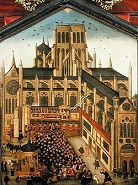
On June 29, 1236 (Sts. Peter and Paul Day) St. Paul's Cross (Saint Powles Crosse) in the NE corner of the churchyard of Old St. Paul's Cathedral in London hosts its first gen. assembly of the people (folkmoot) to announce that Henry III wishes London to be well-governed and its liberties guarded; ditto in 1259, with the king and archbishop of Canterbury personally attending while the royal army is holding the city gates.
In 1237 York House (Norwich Place) in London, England is begun.
On Mar. 1, 1244 Gruffydd ap Llywelyn Fawr (b. 1200) dies trying to escape from the S side of the White Tower of London, lowering himself by a cloth rope which breaks because he is so fat, causing him to fall 90 ft.; he leaves four sons, Owain, Llywelyn, Dafydd, and Rhodri; meanwhile Dafydd, whose hands are freed enters into an alliance with other Welsh princes to reclaim English possessions in Wales, and scores some Vs.
In 1257 pogroms almost wipe out Jewish communities in Cambridge, Canterbury, Lincoln, London, Northampton, Winchester, and Worcester in England.
In Jan.-May 1258 a large volcanic eruption occurs in Mexico or Ecuador, shooting 190-270 megatonnes into the air (8x larger than Krakatoa in 1883), causing a severe winter and famine in England, W Germany, France, and N Italy, pestilence in London, France, Austria, Iraq, Syria, and SE Turkey, lunar eclipses in England, a dry fog in France, a harsh spring in N Iceland et al.
In 1267 goldsmith and tailor guilds fight each other in fierce street battles in London, England.
In 1272 the Fishmongers' Co. is founded in London, England, complete with the Leyhalmode, a court of law to settle disputes over the seafood trade (until 1399).
In 1383 London lord mayor John Comberton de Northampton persaudes the city council to declare the monopoly of the Fishmongers' Co. (founded 1272) to be ended; Richard II restores it in 1399, although they lose their Leyhalmode, a court of law to settle disputes over the seafood trade.
In the 14th cent. the Worshipful Co. of Brewers is founded in London, England, receiving a royal charter in 1438 fom Henry VI.

Isabella the She-Wolf of France finally gets the hot beef she wants? In 1325 after Charles IV of France seizes Edward II's French possessions, definitely not-getting-much English Queen Isabella of France (1295-1358) is sent to negotiate peace with her brother, later tricking Edward into sending 13-y.-o. Edward III after her, while she hooks up with Roger Mortimer, 1st Earl of March (1287-1330), an ambitious exiled Marcher Lord, a mortal enemy of the Despensers (because his grandfather had murdered their grandfather?), who with her probable help had escaped from the Tower of London in 1323 and who, unlike her weak, incompetent, suspected dickwhipped faggot husband Edward II gives her the hot mortadella she likes, carrying on an adulterous relationship which gets them kicked out of the royal court even though Charles IV refuses Edward II's demand to return her to England, after which they find refuge with Count William I of Hainaut, whose wife is Isabella's cousin; they go on to conspire with the large group of English exiles in Paris and disaffected English nobles to make a comeback.
On Sept. 21, 1326 after Queen Isabella of France arranges a marriage between her son Edward II with Count William I of Hainaut's son (Isabella's 2nd cousin) Philippa of Hainaut in return for eight warships, and raises a mainly mercenary army along with some anti-Edward II barons, they land in Suffolk, England, becoming the first successful invasion of England since the 1066 Norman invasion; on Sept. 29 Edward II offers a reward for the heads of Isabella and Mortimer, and she counters by doubling the reward for the head, er, neck of Hugh le Despenser; on Oct. 15 the people of London turn around, er, on Edward II, and he flees to the estate of the earl of Winchester at Glamorgan in Wales in the hope of raising support, which goes limp, er, fails to happen; meanwhile the Dispensers flee with a sizeable sum from the treasury, only to be captured; on Nov. 16 Edward II and his cute hung, young and indispensible Pez dispenser Hugh le Despenser the Younger (b. 1286) are captured in Neath, South Wales as they try to flee to the sea (like Paris and Helen?), and the king is imprisoned in Kenilworth Castle; on Nov. 26 after vainly trying to starve himself to death, Hugh the Younger is executed by Isabella's men in Hereford by hanging him from a 50-ft. gallows, then cutting him down while still alive and placing him nude on a ladder, then slicing off his manhood and burning it in front of him in front of a G-for-Genitals-rated crowd, then drawing (gutting) him with a knife, after which he is beheaded and quartered, and his head mounted on the gates of bloody London (take time to enjoy your view?); his daddy Hugh le Despenser the Elder (b. 1261) was done likewise in Bristol on Oct. 27 - dog in the kennel jokes here?
In 1370 Gray's (Grey's) Inn (Hall) (Manor House) (originally Portpoole Manor) in C London, England is leased by a group of lawyers, named after Portpoole Manor owned by Reynold de Grey, 1st Baron Grey of Wilton (1240-1308), descendant of Norman knight Anchetil (Norse "god-helmet") de Greye (1052-1087), who accompanied William the Conqueror to Britain; it becomes one of the four Inns of the Court around the Royal Courts of Justice in London (Lincoln's Inn, Middle Temple, Inner Temple); members incl. Francis Bacon, William Cecil, and Gilbert Gerard.

In 1411 London Guildhall (city council hall) in England is begun (finished 1440), becoming the only non-ecclesiastical stone bldg. in London to survive to modern times, becoming the site of the trials of Anne Askew, Lady Jane Grey, Thomas Culpeper, Thomas Cranmer, Roderigo Lopez et al., and the last public appearance of pianist Frederic Chopin on Nov. 16, 1848.

In 1423 English cat-lover Richard "Dick" Whitington (Wittington) (b. 1350) dies after setting out to London with his cat, failing to make a go of it, starting to return, then hearing the Bow Bells of London ringing while climbing Highgate Hill from Archway and becoming lord mayor 4x.


In 1450 the French reconquer Normandy from the English, causing the public to turn on Edward Beaufort, 2nd Duke of Somerset (-1455) for his ruinous polices that are causing England to lose its French possessions, causing him to be accused of treason while Henry VI tries to protect him through defeat after defeat; Parliament impeaches his ally the earl of Suffolk, but Henry will not permit him to be tried, and banishes him from England for five years, but the fickle finger of fate intervenes, and his ship is seized by pirates as he tries to cross the Channel, and he is beheaded; 30K men from Kent and Sussex, incl. many respectable small landowners led by Irishman Jack Cade (1420-50) march on London demanding govt. reforms and the restoration Richard Plantagenet, 3rd Duke of York (1411-60) (lt. of France and Ireland) (Shakespeare claims that Richard, now heading an English army in Ireland hired Cade to lead the revolt so that he could personally intervene, quell the rebellion and triumphantly take the throne by force); the rebels' stated aims are reform of the Beaufort-dominated govt. and a change of ministers; the lords of the council raise an army against them, which mutinies, causing the king to flee from London while the rebels invade the city without opposition on July 3, marching across Deptford Bridge with 46K, hunting down ministers and wreaking vengeance; when they execute a man for being able to read and write ("The first thing we do, let's kill all the lawyers", cries a butcher in Shakespeare's King Henry VI, Pt. 2, 4.2.74, meaning those who can read and write), then turn into pillagers, the citizens of London expel them, and an army led by the duke of Buckingham cruelly defeats them on July 12 in the Harvest of Heads; Jack Cade is killed; England is now on the verge of civil war, with Duke Richard of York waiting in the wings; he returns to England from Ireland with his army, and forces the king to admit him to his council, with the avowed purpose of reforming the govt. and ousting the hated duke of Somerset, but the king and queen side with the latter, and civil war is on.
In 1536 Henry VIII establishes the 350-acre Hyde Park in C London after taking land from Westminster Abbey for a hunting ground; it opens to the public in 1637, becoming popular for May Day parades, becoming the largest of the four royal parks forming a chain from the entrance of Kensington Palace through Kensington Gardens and Green Park past the main entrance to Buckingham Palace.
In 1547 a poor rate is levied in London; Bedlam Hospital is acquired by the City of London, operating until 1948.
In 1572 the mayor of London bans plays and playhouses to protect against the plague, and in 1575 he bans players too, causing playhouse owners to begin building outside London's city limits.
On May 7, 1663 the Theatre Royal in Drury Lane, London opens, designed by Thomas Killigrew; too bad, it burns down in 1672, and Christopher Wren designs a new one.



On Sept. 2-5, 1666 (Sept. 12-15 Old Style) (early Sun. morning-Wed.) the Great Fire of London burns 499 acres and kills only a few people after starting in a bakery in Pudding Lane near London Bridge; "10,000 houses all in one flame"; after London lord mayor Sir Thomas Bloodworth is awakened to ask what to do, he replies "Pish, a serving woman might piss it out", then goes back to sleep; too bad, fierce winds whip the flames through the crowded wooden houses to the warehouses on the Thames wharf, and Mister Channel what are you trying to do, give me a heart attack as well?; Charles II and his brother Duke James of York use gunpowder to blow up a row of houses and create a fire break that saves the 1622 Banqueting Hall (where his daddy lost his head in 1649), but flames consume 80% of the walled city, destroying 13.2K houses in a 436-acre area plus another 63 acres outside the city walls, incl. the Old Baley on the W wall of London (rebuilt 1674); homeless Londoners huddle in fields outside the walls, convinced that the fire has been set either by Dutch terrorists in retaliation for the burning of the Dutch fleet by Robert Holmes in Aug., or by papists; London's Guildhall, 44 of the city's rich livery co. halls, the Custom House, the Royal Exchange, St. Paul's Cathedral and 86 other churches are destroyed; the Millennium Feverists score one, but at least the city is cleansed of plague, although other cities with no fires see plague cases decrease; Gen. George Monck manages the city govt., like he did during the 1665 plague; Theatre Royal on Bridges St. escapes the fire, so the plays can go on?; astrologer William Lilly predicted the fire so accurately that he is suspected of starting it; 56-y.-o. jurist Sir Matthew Hale runs the statutory tribunal which for the next six years resolves owner-tenant disputes arising from the fire; on Sept. 16 Charles II demands that a plan for the rebuilding of London be ready in five days, and appoints 34-y.-o. architect Christopher Wren (1632-1723) as the royal surveyor for the project, who goes on to rebuild 52 churches, many of which end up getting destroyed again in the Dec. 29, 1940 City of London Blitz; on July 30, 1669 Wren is officially given the job of replacing Old St. Paul's Cathedral, which is demolished in the early 1670s; it is topped-out on Oct. 26, 1708, and declared complete by Parliament on Dec. 25, 1711, with statues later added to the roof in the 1720s; in 1716 total costs are £1,095,556.
In Jan. 1667 architect Christopher Wren receives a commission from the Corp. of London to rebuild all of London, whose fires are still smoldering 4 mo. after the Great Fire; after deciding to clone the design of filthy crowded Paris, his bosses approve widening of streets, along with new regs forbidding thatched roofs and requiring stone and masonry in place of wooden construction, but balk at tearing down private homes to make way for grandiose public boulevards and monuments; Wren's friend Robert Hooke is appointed surveyor by the London Corp. and works with him to rebuild the city, which features 50 new churches, causing a construction boom resulting in making MF-burned London one of the most modern cities in Europe - with patented wind tunnel technology?
In 1684 the Great Frost of 1683-4 strikes Europe and the British Isles; a Frost Fair is held on the 11-in. thick frozen Thames in London between Southwark and the Temple until the ice melts on Feb. 6; the Thames freezes at least 8x in 600 years of the existence of the London Bridge because its 19 arches impede the river's flow - all them scientific brains and no mention of Global Cooling?

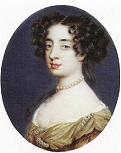
In 1684 Downing St. in London joining Whitehall to St. James's Park is built by soldier-diplomat Sir George Downing, 1st Baronet (1623-84) (known for arranging the acquisition of New Amsterdam from the Dutch) as a residence for Charlotte Lee, Countess of Lichfield (1664-1718), illegitimate daughter of Charles II, obtaining his permission to obtain the street after himself; No. 10 eventually becomes the official residence of the British PM, while No. 11 becomes the residence of the chancellor of the exchequer, and No. 12 the residence of the chief whip; his grandson Sir George Downing, 3rd baronet (1685-1749) leaves funds in his will that eventually (1800) are used to found Downing College at Cambridge U.; completed in 1686.
In 1699 Billingsgate Market in SE London on the Isle of Dogs becomes a fish-only market (until 1982).
On Mar. 11, 1702 England's first successful daily newspaper The Daily Courant begins pub. in London, run by Elizabeth Mallet of King's Arms Tavern in Fleet Bridge, London, who prints editorial-fee foreign news only on one side of the page, and advertisements on the other; it is soon acquired by Samuel Buckley at the Sign of the Dolphin in Little Britain, London; in 1735 it merges with the "Daily Gazetteer".
In 1710 the English Parliament passes the New Churches in London and Westminster Act of 1710, creating the Commission for Building Fifty New Churches to build up to 50 "Queen Anne Churches" in the London area, funded by a duty on coal coming into London like with St. Paul's Cathedral, most designed by architects Nicholas Hawksmoor, Thomas Archer, James Gibbs, and John James, ending with 12 by 1733.

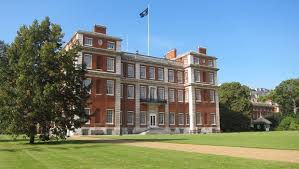
In 1710 Sir Christopher Wren begins Marlborough House in Westminster, London for Sarah Churchill, Duchess of Marlborough, favorite of Queen Anne (finished in 1711); in the 1980s it becomes the HQ of the Commonwealth of Nations and the Commonwealth Secretariat.


On Nov. 15, 1712 (a.m.) Scottish nobleman Sir James Douglas-Hamilton, 4th Duke of Hamilton (b. 1658), after being created a peer of Britain (1st duke of Branded With the Mark of Shame, er, Brandon in Suffolk) for selling out his Scottish people and getting a "toothache" during the final vote on the Acts of Union, allowing them to be passed in the Scottish House of Lords (still, the very thought of a wild-eyed Celt sitting in the British House of Lords with the descendants of Edward I Longshanks?), and maybe worse, being created Knight of the Garter in Oct. (the only non-royal in Britain to be a knight of both Thistle and Garter), fights a famous sword duel in Hyde Park, London with this-bird-you-cannot-change longtime Whig opponent Charles Mohun, 4th Baron Mohun of Okehampton (1675-1712) (actually, Hamilton had been trying to steal his inheritance, and Mohun was a longtime dueling fool, and the Scot prick was made special envoy to Paris, and it was about time for him to fly?), who kills the pesky uppity Scot, after which he dies from his horrific wounds also, all of which is later covered in William Makepeace Thackeray's blockbuster 1852 novel The History of Henry Esmond, and causes Parliament to ban seconds in duels, causing the quicker and less gruesome pistols to become the weapon of choice - erin go bragh?
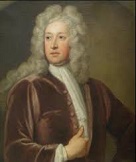
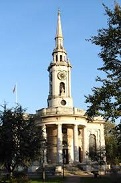
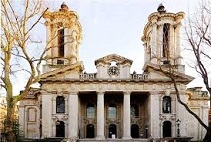
In 1712 English Baroque architect Thomas Archer (1668-1743) begins St. Paul's Cathedral, Deptford in Deptford, Kent (near London), with sweeping semi-circular porticos (finished 1730). In 1713 he begins the Baroque St. John's Church in Smith Square, London (finished 1728), complete with four corner towers, becoming known as Queen Anne's Footstool after she allegedly kicked over her footstool and told Archer that she wanted it to look like that.


In Feb. 1714 after returning to London from Rome in Nov. 1708, where he studied under Carlo Fontana, Aberdeen, Scotland-born architect James Gibbs (1682-1754) begins the £16K St. Mary le Strand Church in Westminster, London (finished Sept. 1717, consecrated Jan. 1, 1723), becoming the first completed for the Commission for Building Fifty New Churches; the Italianate interior is inspired by Luigi Fontana and Michelangelo, and the steeple is influenced by Sir Christopher Wren; too bad, after a great quantity of stone purchased for a statue of Queen Anne is ordered to be reused after her 1714 death, he ends up extend the ground plan N-S, making it oblong, and add extravagant Baroque ornamentation, pissing-off critics esp. after a decorative urn falls on a passerby during a procession in 1802; either way, the bldg. makes Gibbs a star.
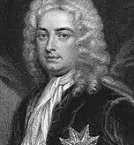

In 1715 Scottish architect Colen Campbell (1676-1729) begins pub. Vitruvius Britannicus, or, The British Architect (3 vols.) (1715-25), the first original architectural work pub. in England since John Shute's "First Groundes"; a student of James Smith, he disses the "excesses" of Baroque style and declares British independence from Europe, dedicating the work to George I of England, popularizing neo-Palladian Architecture in Britain and British Am., making him a star, riding on a boom in country house and villa building among the Whig oligarchy. In 1717 after being hired by Lord Burlington, he remodels Burlington House on Piccadilly Circus in Mayfair, London, which ends up housing five learned societies (the Courtyard Societies), incl. the Royal Astronomical Society, Society of Antiquaries of London, Linnean Society of London, Royal Society of Chemistry, and the Geological Society of London.
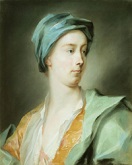
In 1718 the first Free Masonic Hell Fire (Hellfire) Club is founded by Jacobite politician Philip, 1st Duke of Wharton (1698-1731) et al. in London, England, expanding to several clubs run by the notorious Sir Francis Dashwood et al., whose members (incl. Benjamin Franklin?) engage in sexual orgies and call themselves "Friars of St. Francis of Wycombe"; in 1721 they are closed by royal edict, and some reopen later under less obvious names in 1749-60/66? - like massage parlors?
In 1719 Westminster Hospital in Broad Sanctuary, London is founded after a meeting in a coffeehouse by four men to discuss a "charitable proposal for relieving the sick".
In 1721 Porter, a heavily-hopped beer mixture of dark to light malts is invented in London, England, becoming the first beer to be aged at the brewery and shipped ready-to-drink, and the first that could be made on a large scale; the name comes from the landlord of the Old Blue Last Inn in Shoreditch, London, who orders Harwood Brewery to supply it ready-mixed, and whose customers are mainly market porters; too bad, it initially fails to gain popularity in the Am. colonies.


In 1721 James Gibbs (1682-1754) designs a replacement for St. Martin-in-the-Fields Church in the NE corner of London's Trafalgar Square, and it is completed in 1726, going on to become popular for cloning in British North Am.
In 1724 after receiving a bequest from William III's secy. Sieur D'Allone, English philanthropist Dr. Thomas Bray founds the Associates of Dr. Bray in London educated enslaved blacks in the British North Am. colonies; on Jan. 2, 1760 they elect Ben Franklin to membership, signifying him as a leading philanthropist in New England.
In 1730 the Serpentine Lake (River) dividing Hyde Park, London in half is created from the Westbourne River for Queen Caroline; Serpentine Bridge marks the boundary between Hyde Park and Kensington Gardens, causing the E half of the lake to become knoan as the Serpentine, and the W half to become known as the Long Water; it only has one bend.
In 1750 a typhus outbreak caused by enclosing the court of Old Bailey in London kills 60 incl. the lord mayor and two judges, causing plans for rebuilding to be drawn up (1774).
In July 1765 Leopold Mozart brings his two wunderkids to London, and makes the boo-boo of cheapening them by having them perform in the Cornhill Tavern, ruining their value as exclusive toys of the aristocracy with Empress Maria Theresa, who utters the soundbyte "These people go about the world like beggars", and turning Wolfgang Amadeus Mozart into a lifelong outcast who can never get a good aristocratic appointment, forcing him to keep coming back to the petty bourgeois for biz.
On June 28, 1769 The Morning Chronicle begins pub. in London (until 1862).
In 1769 Old Blackfriars Bridge in London is built (destroyed 1860).


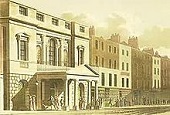
On Jan. 27, 1772 the £36,965 London Pantheon on the S side of Oxford St. opens, built by unknown Weeford-born English neoclassical architect James Wyatt (1746-1813) (making him a star, and rival to Robert Adam), with a central dome reminiscent of the Pantheon in Rome, a main rotunda that's one of the largest rooms in England, and a set of winter assembly rooms (Winter Ranelagh), which Horace Walpole calls "the most beautiful edifice in England"; opening night is attended by 1.7K members of high society paying up to £50 each, incl. eight dukes and duchesses and all the foreign ambassadors; after the King's Theatre in Haymarket burns down in 1789 it is converted into an opera house, but burns down after only one season in 1792; on Apr. 9, 1795 it reopens after being rebuilt; in 1811-12 it is converted to a theatre; in 1833-4 it is rebuilt as a bazaar by architect Sydney Smirke; in 1937 it is demolished to make way for an art deco Marks and Spencer dept. store designed by architect Robert Lutyens.
In 1784 a hat tax for hat sellers of 5 shillings is imposed in England, rising to £2 in London, with the death penalty for forging a hat tax license; it is abolished in 1811.


On Jan. 1, 1785 John Walter (1739-1812) founds The Daily Universal Register in London, England, concentrating on ads in competition with eight other newspapers; on Jan. 1, 1788 he changes its name to The Times, and branches into scandals and gossip whiile striving to record the views of the London elite, launching a trend of naming newspapers some variant of Times; Times Roman typeface is developed to be legible despite low-tech printing, switching in Nov. 2006 to Times Modern; in 2004 it switches from broadsheet to compact formats, escept The Sunday Times; in Dec. 2016 it has a daily circ. of 446K, 792K for The Sunday Times; on June 6, 2006 it launches a U.S. ed.; it becomes a favorite of libraries, with its detailed index insuring popularity with researchers.
In 1787 the Marylebone Cricket Club in Dorset Square, London is founded by Thomas Lord (1755-1832), who plays his first game on May 31 for Middlesex against Essex, and moves to Lord's cricket ground; co-founders incl. Charles Lennox, 4th Duke of Richmond (1764-1819); the club pub. the 42 Laws of Cricket next May 30, and copyrights them - changing them laws ain't cricket?
In Jan. 1789 after George III reads Shakespeare's King Lear and suffers another bout of madness last Nov., the 1789 Regency Crisis sees PM William Pitt demand and receive a regency for Prince George from Parliament. On Mar. 10 (maybe because of that haunting feeling of a new King George being crowned on the other side of the pond?) mad King George III apparently recovers, causing the biggest fireworks celebrations ever seen in London, and he magnanimously pardons many convicts convicted under the Bloody Laws (death for petty offenses), giving them transportation to Australia instead, esp. a number of women, helping complete the required 225 fertile convict women needed as cargo for the Lady Juliana, which departs from England on July 29, with a special surgeon and an expensive contract for good food paid for by the govt. in the hope that the women would populate Australia with pure white wabbits.

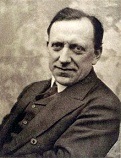

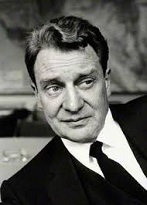
On Dec. 4, 1791 The Observer Sun. broadsheet newspaper is founded in London, England by W.S. Bourne, becoming the world's first Sun. newspaper; too bad, he goes bankrupt and sells it to his brother, who gets govt. backing in return for influence over ed. content, going on to preach against Thomas Paine, Francis Burdett, Joseph Priestley et al.; in 1901 it is acquired by Lord Northcliffe, who sells it in 1911 to William Waldorf Astor, who gives it to his son Waldorf Astor, 2nd Viscount Astor (1879-1952) in 1915, with Conservative ed. (since 1908) James Louis Garvin boosting circ. to 200K by 1942 when he is forced out by Waldorf's liberal son David (Francis David Langhorne) Astor (1912-2001), who becomes ed. in 1948-75, going on to oppose the 1956 govt. invasion of Suez, which causes circ. to tank, after which the Astors sell it to Atlantic Richfield (ARC), who sells it to Lonrho plc in 1981, who sells it to Guardian Media Group in June 1993.
In 1792 the Baptist Missionary Society is founded in London.





In 1825 after George IV upon his accession in 1820 decided to renovate Buckingham Palace (built in 1703 and known as the Queen's House) into a small comfortable home, Lambeth, London-born English architect John Nash (1752-1835) designs the Garden Front of Buckingham Palace in London, made of pale golden Bath stone; in 1826 kingy decides to turn it into a a French neoclassical palace, with Nash as chief architect; too bad, in 1829 his extravagant designs get him removed, and after his accession in 1830 William IV hires Derby-born architect Edward Blore (1787-1879) to finish the work, almost deciding to turn it into the new Houses of Parliament after the 1834 fire; in 1850 Blore finishes the East Front, the principal facade, which is remodeled in 1913 by Sir Aston Webb (1849-1930) - ready for Queen Vicky in 1837? In 1837 Buckingham Palace (built 1703) near St. James Park in Westminster, London becomes the official town residence of the British sovereign, replacing St. James's Palace (since 1689).
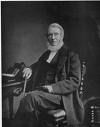

In 1825 the Grand Entrance to Hyde Park in C London is built, designed by Bloomsbury, London-born English architect Decimus Burton (1800-81), protege of John Nash.


In 1837 after they burn down in 1834, Westminster, London-born English architect Sir Charles Barry (1795-1860) begins the new Houses of Parliament (Palace of Westminster) on the N bank of the Thames River in Westminster, London; the House of Lords is completed in 1847, the House of Commons in 1852.


In Jan. 1850 after the Great Exhibition Commission is establishing, holding a contest, which receives 245 entries; on June 9 Sir Joseph Paxton (1801-65), head gardener for the 6th Duke of Devonshire at Chatsworth House visits the site, then doodles the concept on June 11 onto a sheet of pink blotting paper, which is accepted in July, allowing him to build the £2M 1,851 ft. x 450 ft. x 128 ft. (770K sq. ft.) Crystal Palace in Hyde Park, London for the 1851 Internat. Exhibition before its May 1, 1851 opening; taking advantage of the invention of cast plate glass in 1848, supplied by the Chance Bros. of Smethwick, it contains 92.9K sq. m of glass; the name comes from an article by playwright Douglas Jerrold in Punch mag., referring to a "palace of very crystal"; after the exhibition it is moved to Penge Peak next to Sydenham Hill on Penge Common in South London until it burns down in 1936; the beginning of Victorian architecture, which incorporates steel in the structures.
In summer 1855 there is a heat wave in London that causes a cholera outbreak and raises such a stink that Parliament orders 80 mi. of sewers built, finally turning it into a modern city; the next hottest heat wave is in 2003.





If you can't fix it you gotta stand it? On Apr. 10, 1856 the 16-ton Big Ben Bell is cast at Warner's of Cripplegate on Stockton-on-Tees, and unofficially (not really, he's just tall?) named after Benjamin Hall, 1st Baron Llanover (1802-67), dir. of public works in 1836 (or heavyweight boxer Benjamin Caunt?); it is first mounted in New Palace Yard, then cracks, causing it to be recast at the Whitechapel Bell Foundry, coming in at 13.5 tons; Edmund Beckett Denison, 1st Baron Grimthorpe (1816-1905) designs the clock mechanism with a new double 3-legged gravity escapement, which is built by London-born watchmaker Edward John Dent (1790-1853), who died in 1853 before he could complete the project, which was finished by his adopted son Frederick Rippon Dent in 1854. On Sept. 7, 1859 the new 316-ft. Victorian Gothic Big Ben (Great) Clock Tower at the N end of Westminster Palace in London becomes operational, with four clock faces each 180 ft. above ground, becoming the world's largest 4-faced chiming clock; the tower leans 8.66" to the NW; the hour hand is 9-ft. long and the minute hand 14-ft.; the clock tower and dials are designed by Augustus Welby Northmore Pugin (1812-52); the 21-ft.-diam. iron framework has 576 pieces of opal glass; at the base of each clock face is the gilded Latin inscription "DOMINE SALVAM FAC REGINAM NOSTRAM VICTORIAM PRIMAM" (O Lord, keep safe our Queen Victoria the First); it runs eight days between winds; each penny added or subtracted to its pendulum changes it by 0.4 sec per year; the clock becomes known for accuracy and reliability, running accurately until New Year's Eve, 1962, when heavy snow causes it to chime the New Year 10 min. late; its first major breakdown happens in 1976 (until ?); in 2012 it is renamed Elizabeth Tower in honor of Elizabeth II's Diamond Jubilee.
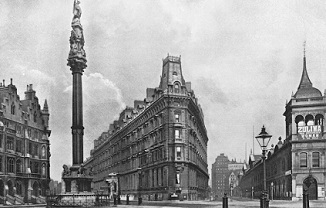
In 1860 the Westminster Palace Hotel is founded in the heart of London's political district next to Westminster Abbey and Westminster Palace, which houses Parliament, becoming the first hotel in London with hydraulic lifts (elevators); the 140-room wing at the rear of the hotel becomes the home of the India Office that governs India until it moves to Whitehall in 1867; in 1867 if hosts the London Conference that finalizes the Confederation of Canada; in 1909 Mohandas Gandhi stays there; in the 1920s it is converted to an office bldg. until it is demolished in 1974, becoming a branch of Barclays Bank.
In 1860 the Food Adulteration Act is passed in Britain, becoming the first gen. pure food law in the English-speaking world; despite it, 87% of bread and 74% of milk in London is still adulterated by next year.
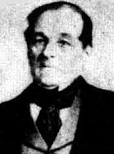

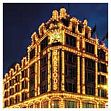
In 1861 Charles Digby Harrod (1841-1905) takes over the London grocery store (founded 1834) of his father Charles Henry Harrod (1799-1885) on Brompton Road in Knightsbridge, and goes on to add furniture, china, medicines and perfumes, creating Harrods dept. store, installing a plate glass window and reaching sales of $1K a week by 1868, wrapping groceries in the color of the Union Jack; it is gutted by fire in 1883, then floated as a limited corp., growing to 18K sq. m of retail space, with the motto "Omnia Omnibus Ubique" ("All things, for all people, everywhere"); in May 2010 it is acquired by Qatar.
In 1862 the 1862 Garrotting Panic grips London, although it was blown way out of proportion?


On Dec. 8, 1864 Pope (since 1846) Pius IX (1792-1878) issues his infamous Syllabus of Errors (Syllabus Errorum), which condemns separation of church and state, freedom of the press and religion, Rationalism, modernism, liberalism, Socialism, etc., all lumped together on the red ink list; on Dec. 8 he also issues the encyclical Quanta Cura (Condemning Current Errors), condemning freedom of religion and speech, and separation of church and state, especially the "insane" idea that "Liberty of conscience and worship is each man's personal right, which ought to be legally proclaimed and asserted in every rightly constituted society; and that a right resides in the citizens to an absolute liberty, which should be restrained by no authority whether ecclesiastical or civil, whereby they may be able openly and publicly to manifest and declare any of their ideas whatever, either by word of mouth, by the press, or in any other way"; meanwhile Italy renounces its claim on Rome, and the capital of Italy is moved from Turin to Florence (until 1870); on Apr. 16 after several Vs of his Repub. forces in uniting Italy from control by the papal states, Giuseppe Garibaldi is given a triumphal reception in London, England, with the crowds chanting "Garibaldi forever" and We'll get a rope and hang the pope so up with Garibaldi!"

In 1865 a new drainage system for London opens after six years of work under the supervision of Metropolitan Board of Works chief engineer and designer Sir Joseph William Bazalgette (1819-91); it is completed in 1875, with 83 mi. of intercepting sewers.


In 1868 Essex-born English Victorian Gothic Revival architect George Edmund Street (1824-81) designs the Royal Courts of Justice (Law Courts) in London 1/2-mi. W of Old Bailey (Central Criminal Court), opened by Queen Victoria in 1882.
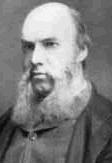
On Apr. 19, 1880 the Aristotelian Society for the Systematic Study of Philosophy is founded at 17 Bloomsbury Square in London, England; pres. #1 (1880-94) is Shadworth Hollway Hodgson (1832-1912); Bertrand Russell becomes pres. #8 in 1911-13.
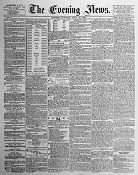
On July 26, 1881 The Evening News daily newspaper is founded in London, England, undercutting The Times by half and becoming the first popular newspaper in London and the #1 London evening newspaper until it merges with the rival "Evening Standard" in 1980; in 1987 it is revived for 8 mo.

In 1886 Tower Bridge bascule-suspension bridge over the Thames River in London 0.5 mi. from the Tower of London is begun (finished 1894).
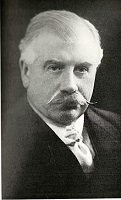

On Aug. 10, 1895 (Sat.) the first nightly Promenade Concert is held at Queen's Hall in London, arranged by impresario Robert Newman (1858-1926) and conducted by Sir Henry Joseph Wood (1869-1944), running for 10 weeks and becoming a big hit, with the soundbyte by Newman: "I am gong to run nightly concerts and train the public by easy stages, popular at first, gradually raising the standard until I have created a public for classical and modern music"; they later become known as the BBC Proms, giving British composers an audience.
In 1898 the Great Manure Crisis of 1898 sees horse manure accumulate in the streets of large Western cities incl. New York City, London, and Sydney, causing the 3-day First Internat. Urban Planning Conference to be convened in New York City but fail to find a solution; luckily the horse-drawn carriage solves it for them, with U.S. car sales zooming from 4,192 in 1900 to 356K in 1912; in 1917 the last horse-drawn streetcar in New York City is retired.
On July 13, 1899 the London Govt. Act of 1899 divides the County of London into 28 metropolitan boroughs, replacing 41 parish vestries and district boards of works; the first elections to the new boroughs are held on Nov. 1, 1900.
In 1905 the first motor buses begin operation in London, England; next year the Piccadilly and Bakerloo underground (subway) lines begin operation.

In Feb. 1910 the Dreadnought Hoax sees English super-hoaxer William Horace de Vere Cole (1881-1936) get the British to officially greet a group of Abyssinian princes accompanied by high-ranking Foreign Office rep. Herbert Cholmondeley (pr. CHUM-lee) with a good part of the British fleet in Weymouth Bay in Dorsetshire, incl. HMS Dreadnought, and to have crowds see off their train as they return to London; later it is revealed that the princes, who like to say "Bunga-bunga", are phonies in makeup applied by Sarah Bernhardt's makeup man Willy Clarkson, incl. writer Virginia Woolf (1882-1941), artist Duncan Grant (1885-1978), cricketer Anthony Buxton, judge's son Guy Ridley, and Virginia's brother Adrian Stephen (the "interpreter"), also that Cholmondeley is Cole.
On May 18, 1918 (night) 33 British aircraft bomb Cologne, Germany, killing 110 civilians and damaging many bldgs; on May 19 (night) 28 German Gotha bombers attack London, killing 48 civilians, losing three bombers shot down and three crash-landing at home.

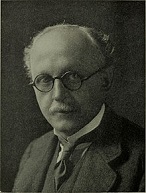
On July 19, 1919 the first Peace Day celebration is held in London, organized by foreign secy. Lord Curzon, in which a plaster Cenotaph (Gr. "empty tomb"), designed by Kensington, London-born architect Sir Edwin Landseer Lutyens (1869-1944) is unveiled, which is later reproduced in stone, and the first wreath is placed there on Nov. 11, 1920.
In 1925 the Queen Mary Reservoir, with a cap. of 6.75B gal. is opened in Littleton, England to serve London, which uses 300M gal./day in mains having a total length of 8K mi.
On Feb. 4, 1962 the London Sunday Times becomes the first newspaper to print a color supplement.
On Jan. 21, 1970 after problems in the Pratt & Whitney JT-9D engines are revealed in Oct. 1969, causing a delay, during which four inflatable chutes are fitted allowing 80 passengers/min. to evacuate in an emergency, Pan Am Flight Two, the first regularly scheduled commercial flight of the 350-ton 400-passenger 2-story cabin Boeing 747 "Jumbo Jet" carrying 324 passengers begins in New York City, and ends in London's Heathrow Airport 6.5 hours later at 14:14 GMT after being delayed seven hours with technical problems, after which a faulty compressed air bottle in the emergency door causes a 4.5 hour delay during which 36 of 153 passengers transfer to other flights before the return trip to New York City takes off.
On Jan. 25, 1970 John Lennon and Yoko Ono shave their heads and declare 1970 "Year One", donating their hair to the interracial Black House community center in North London for auction.
On Mar. 9-15, 1970 the Atomic Sunrise Festival in London features Black Sabbath, David Bowie, Arthur Brown, Gypsy, and Quintessence.
On June 9, 1970 the centennial of the death of British author Charles Dickens (1812-70) is celebrated by Dickens societies worldwide; the Queen Mother places a wreath on his grave in Poet's Corner in Westminster Abbey in London.
On Aug. 9, 1970 the Mangrove Nine are arrested after a protest at the police station over harassment of the black-owned Mangrove Restaurant in Notting Hill, West London; after a 55-day trial they are all acquitted of the most serious charges after the first British judicial acknowledgement of behavior by the Metro police motivated by racial hatred.
The Month the Music Died? On Sept. 3, 1970 rock star Alan Christie "Blind Owl" Wilson (b. 1943) dies of an OD in Los Angeles, Calif.; on Sept. 18 rock star James Marshall (Johnny Allen) "Jimi" Hendrix (b. 1942) dies of an OD in London; on Oct. 4 rock star Janis Lyn Joplin (b. 1943) dies of an OD in LA; all die at the same fabled age of 27, joining the fabled 27 Club.
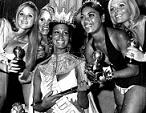

On Nov. 20, 1970 the 1970 Miss World Pageant in the Royal Albert Hall in London is won by black contestant Jennifer Josephine Hosten (1953-) of Grenada; black contestant Pearl Jansen from South Africa places 2nd; Irith Lavi from Israel places 3rd; too bad, judge Sir Eric Matthew Gairy (1920-97) (PM of Grenada since 1967) apparently rigs the results, making her the winner with only two firsts, while blonde white Swedish contestant Marjorie Christel Johansson, who received four firsts comes in #4, causing a protest outside the hall, after which dir. Julia Morley (1941-) resigns, and Johannsson later says she has been cheated; other judges incl. Glen Campbell, Joan Collins, and Nina.
In 1970 Russian ballerina Natalia Romanovna Makarova (1940-) defects to the West from the Kirov Ballet in London, going on to join the Am. Ballet Theater in New York City.
On July 18, 1994 the AMIA (Asociacion Mutual Israelita Argentina) bldg. in Buenos Aires housing Argentina's two main Jewish orgs. is bombed by suspected Iran-backed Hezbollah jihadists, killing 85 and injuring 300+; on July 19 a bomb destroys a commuter plane in Panama, killing 21, incl. many Jews; on July 26 14 are injured by a bomb outside the Israeli Embassy in London; on July 26 a similar attack on a Jewish fundraising center in London injures five; Israeli authorities blame all the attacks on pro-Iranian groups; on Dec. 8, 2017 a judge in Argentina orders the arrest of former pres. Cristina Fernandez de Kirchner for covering up Iran's responsibility in the AMIA attack.

On Dec. 31, 1999 (20:00 GMT) the 443-ft. (135m) high London Eye (Millennium Wheel) is opened by PM Tony Blair, becoming the tallest observation wheel in the world (until May, 2006).
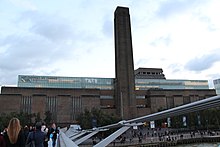

On May 12, 2000 the Tate Modern (Museum) opens in Southark, London across the Thames River from St. Paul's Cathedral in the former Bankside Power Plant after a $200M renovation by Swiss architects Jacques Herzog (1950-) and Pierre de Meuron (1950-); the old Tate Museum upriver is renamed Tate Britain and continues to display Gainsboroughs and Turners, while the 12-story-high lobby of the Tate Modern features modernist crap, er, art incl. the gigantic steel sculptures I Do, I Undo, and I Redo by spider-loving French sculptor Louise Josephine Bourgeois (1911-2010).
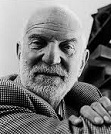

On June 10, 2000 the 1,066-ft. (325m) Millennium Bridge in London, England (begun in 1998) between Southwark Bridge and Blackfiars Bridge near St. Paul's Cathedral and the Tate Modern Gallery opens, designed by modernist sculptor Sir Anthony Alfred Caro (1924-2013), the Arup Group, and Foster and Partners, becoming the first pedestrian crossing over the Thames River in C London for over a cent.; too bad, it soon becomes known as the Wobbly Bridge after it begins shaking under the traffic, and on June 13 it is shut down for almost two years to fix it, reopening in 2002.


On July 7, 2005 (7/7) (8:49 a.m. BST) the London 7/11 Suicide Bombings see four bombings in London, England (pop. 7.4M) by four jihadists, incl. near Paddington Station (Circle line) (N of Hyde Park), Liverpool Street Station (Circle line) (NW of Aldgate Station), Russell Square (Piccadilly Line) (N of the U. of London and the British Museum), and King's Cross Station (Piccadilly Line) (stop for the Hogwart's Express?) kill 52 plus four suicide bombers, and injure 784, becoming the deadliest attack on London since WWII, and shocking the supposedly safe city, which had been considered a tolerant haven for budding Muslim terrorists; former NYC Mayor Rudolph Giuliani is yards away from the explosion near the Liverpool St. Station, and calls it an "eerie reminder" of 9/11; the politicos come thru with great soundbytes: "We will show, by our spirit and dignity, and by our quiet but true strength that there is in the British people, that our values will long outlast theirs" (PM Tony Blair); "This scorn for human life is something we must fight with every greater firmness" (Jacques Chirac); "No matter where such inhuman crimes occur... they demand unconditional condemnation" (Vladimir Putin); on July 17 the Sunni Council, Britain's largest Sunni Muslim group, led by Sheikh Abu Basir al-Tartusi issues a fatwa condemning the bombings as "perverted ideology", while al-Tartusi later issues the soundbyte "More than half of the Quran and hundreds of the Prophet's sayings call for jihad and fighting those unjust tyrants"; one of the bombers, Shehzad Tanweer (22), a Briton of Pakistani descent who worked at his father's fish and chips shop in Leeds leaves behind savings of $212,460, which goes to his family; ringleader Tafazal Mohammad (1964-) is later paid 80K pounds to lecture Scotland Yard's counterterrorism unit on how best to "engage" with Muslims; British pacifist Samantha Louise Lewthwaite (1983-), widow of black Jamaica-born British Muslim convert Germaine Maurice Lindsay (Abdullah Shaheed Jamal) (1985-2005), who blew up on Russell Square, killing 26, goes on to become the Muslim terrorist AKA the White Widow.
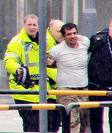

On June 29, 2007 police foil a plot involving two cars in C London, England packed with explosives near Piccadilly Circus; on June 30 a fiery dark green Jeep Cherokee rams the terminal at Glasgow Internat. Airport, then two men run from it, Iraqi physician Bilal Talal Samad Abdullah (1980-), and Bangalore, India-born engineering student Kafeel (Khalid) (Khaled) Ahmed (Ahmad) (b. 1979), the latter on fire, both ending up captured and Ahmed in critical condition, obviously a bungled suicide bombing job, which is confirmed by a suicide note; Ahmed dies on Aug. 2; investigators later conclude that they had already tried to bomb a nightclub in C London; Abdullah is given two concurrent life sentences in London for conspiracy on Dec. 17, 2008, with possible parole in 32 years; meanwhile British authorities announce that the Muslim terrorists have been plotting to use health care profs. for attacks.
On Jan. 7, 2010 former archbishop of Canterbury (1991-2002) Baron George Carey (1935-) pub. a letter in the London Times warning that uncontrolled Islamic immigration will threaten the "very ethos or DNA" of Britain.
On Apr. 10, 2010 the conference Islam in Italy: Fulfilling the Prophecy is held in London, England to celebrate the coming fulfillment of Prophet Muhammad that Islam will conquer first Constantinople then Rome.
On Sept. 7, 2010 transit strikes cripple London and France.
On Oct. 27, 2010 Germany makes forced marriages (mainly an Islamic practice) illegal, with up to five years in prison; meanwhile a survey by SingleMuslim.com of London reveals that 26.2% believe that polygamy is legal within Islam; meanwhile it is revealed that Muhammad is now the most popular infant boy name in England, ahead of Jack and Harry.

On May 22, 2013 (2:20 p.m. local time) the Woolwich Beheadings see two Allah Akbar-shouting British-Nigerian Muslim jihadists Michael Olumide Adebolajo (1984-) (Muslim convert in 2003, who changed his name to Mujaahid) and Michael Adebowale (1990-) run over British soldier (drummer) Lee Rigby (b. 1987) with their car, then hack and behead him with a machete on the streets of Woolwich (SW London), England 200 yards from an army barracks he was heading to, then tell the ITV crew filming them his political reasons for it, with the soundbyte: "We swear by almighty Allah we will never stop fighting you. The only reason we have done this is because Muslims are dying every day. This British soldier is an eye for an eye, a tooth for a tooth... There are many many ayah throughout the Quran that say we must fight them as they fight us" before being shot by police, causing anti-Islamists protests by the English Defence League (EDL) et al., whose leader Tommy Robinson utters the soundbytes "We're justified in our anger", and "I' don't care if they're offended. I'm offended every day", along with a coverup attempt by the PC media led by PM David Cameron, who calls the attack a "betrayal of Islam" then holds a special meeting of the Cobra security cabinet; deputy PM Nick Clegg utters the soundbyte that the attack "flies in the face of the peace and love that Islam teaches"; London mayor Boris Johnson utters the soundbyte "It is completely wrong to blame this killing on Islam"; ex-PM Tony Blair utters the Tony Blair utters the soundbyte: "There is not a problem with Islam. For those of us who have studied it, there is no doubt about its true and peaceful nature... But there is a problem within Islam, from the adherents of an idology that is a stain within Islam... It is not the province of a few extremists... The world view goes deeper and wider than it is comfortable for us to admit""; scout leader Ingrid Loyau-Kennett (1964-) becomes a hero for talking the jihadists into stopping before police arrive; the jihadists were influenced by British radical cleric Omar Bakri Mohammed?; radical British cleric Anjem Chaudhry utters the soundbyte that most Muslims would agree with the jihadists; on May 24 British authorities arrest two in conjunction with the beheading while tightening security; on May 25 7K EDL members march in Newcastle; in Nov. 2010 Adebolajo was detained in Kenya for trying to join Al-Shabaab in Somalia; on May 26 Cameron goes on vaction in Ibiza with his family, pissing-off many.

On Mar. 22, 2017 British-born Islam convert jihadist Khalid Masood (b. 1964) tries to attack the Parliament Bldg. in Westminster, London, England, driving his gray 4x4 car into a crowd on Westminster Bridge, killing two and injuring 50 before emerging with an 8-in. knife and stabbing a policeman to death before he is killed, causing Parliament to go into Code Red lockdown; ISIS claims responsibility.

On June 3, 2017 the 2017 London Massacre sees three British Muslim jihadists drive a van into pedestrians on London Bridge in England, then stab people in the nearby Borough Market area, killing seven and injuring 48 before being killed by police; parallel universe PM Theresa May utters the soundbyte that the British people must come together to fight "extemism", with the soundbyte: "It is an ideology that claims our Western values of freedom, democracy, and human rights are incompatible with the religion of Islam"; on June 5 police arrest two of the three attackers, Pakistan-born Khuram Shazad Butt (27) and Moroccan or Libyan-born Rachid Redouane (Elkhdar) (30), members of the militant jihadist network al-Muhajiroun; the third is Youssef Zaghba; Muslim London mayor Sadiq Khan utters the soundbyte: "Terrorism is par and parcel of living in a great global city", assuring people there is nothing to fear, causing Pres. Trump to tweet that he's nuts, causing him to change his story to assuring people that there is nothing to fear from heightened security.
On Feb. 9, 2018 a 250m 130-tonne Monster Fatberg found last year goes on display at the Museum of London, composed of sewer clog.
On May 15, 2018 the Wealth-X Billionaire Census is pub., revealing that billionaire wealth surged 24% to a record level in 2017, and the billionaire pop. surged 15% fo 2,754 (vs. 2,473 in 2015); San Francisco, Calif. leads the other cities, with one billionaire for every 11,612 inhabitants, vs. 81,311 for New York City, 84,007 for Dubai, 84,962 for Hong Kong, 101,957 for Los Angeles, Calif., and 135,198 for London.
On June 15, 2019 ater a string of knife and gun attacks in London kill three, Pres. Trump calls out Muslim London Mayor Sadiq Khan, calling him a "disaster" and saying that "London needs a new mayor ASAP."
On Nov. 29, 2019 (Black Fri.) (2:00 p.m.) an Islamist jihadist stabbing attack at London Bridge in London, England by Pakistani immigrant Usman Khan kills two and injures several before bystanders subdue him with a fire extinguisher and a narwhal task and police shoot the bum after he exposes a fake suicide belt; he had been released from jail 1 year ago and required to wear an electronic tag, and pulled the knife at a rehab event; meanwhile another jihadist stabbing attack at the Grote Marktstraat in The Hague, Netheerlands injures three.